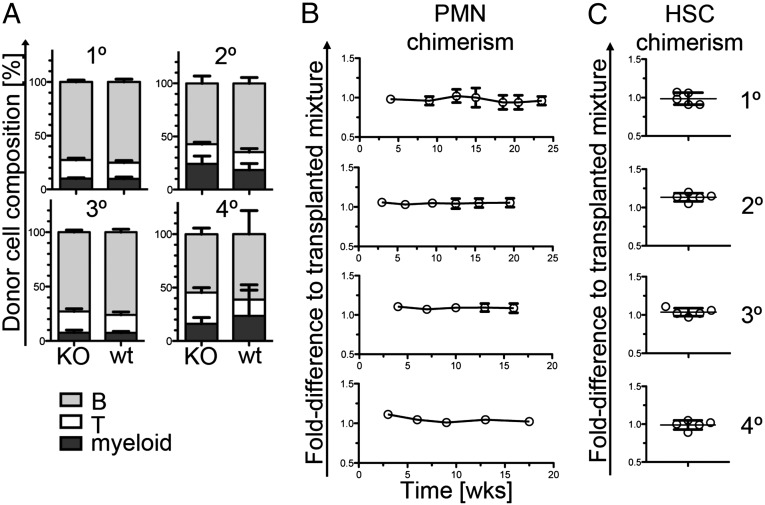Fig. 2.
CD133-deficient HSCs can competitively and serially reconstitute immune cells and the HSC compartment of irradiated recipient mice. (A) Bars show the composition of graft-derived leukocytes (CD3+ T cells, B220+ B cells, and CD11b+ myeloid cells) in the blood of primary (1°), secondary (2°), tertiary (3°), and quaternary (4°) recipient mice 15, 15.5, 16, and 17.5 wk after transplantation, respectively. Lin– bone marrow cells of CD133 KO or wild-type mice were mixed with Lin– wild-type competitor cells and transplanted into irradiated wild-type recipient mice. All genotypes were identified using antibodies specific for different CD45 isotypes. Five replicate recipient mice for either condition were analyzed. Results represent means ± SD. A significant difference was found between T-cell frequencies in quaternary recipients (P = 0.014). (B) Plots show the fold difference of the ratio of the relative contribution of CD133 KO and wild-type cells to blood neutrophils (PMN). Data are presented as fold difference to the initially transplanted mix of wild-type and CD133 KO HSCs over time. Results show means ± SD of five replicate mice. No statistically significant differences were obtained. (C) Plots show the fold-difference of the ratio of the relative contribution of CD133 KO or wild-type competitor cells to the HSC compartment (KSL) in the bone marrow at the time point of analysis. Data from all replicate mice are shown. Time points of analysis after transplantation were as follows: primary recipients, 24 wk; secondary recipients, 20 wk; tertiary recipients, 16 wk; quaternary recipients, 17.5 wk.

